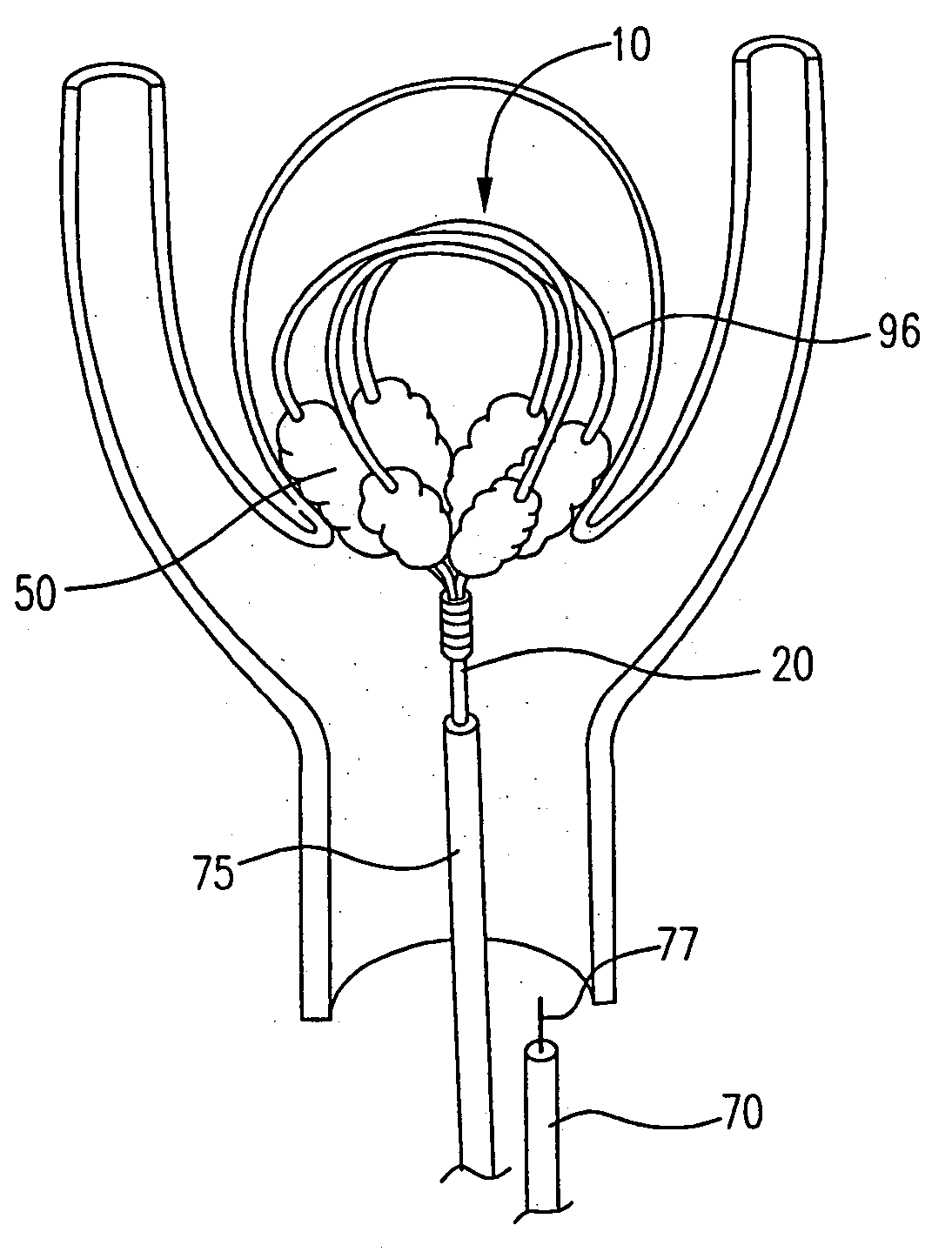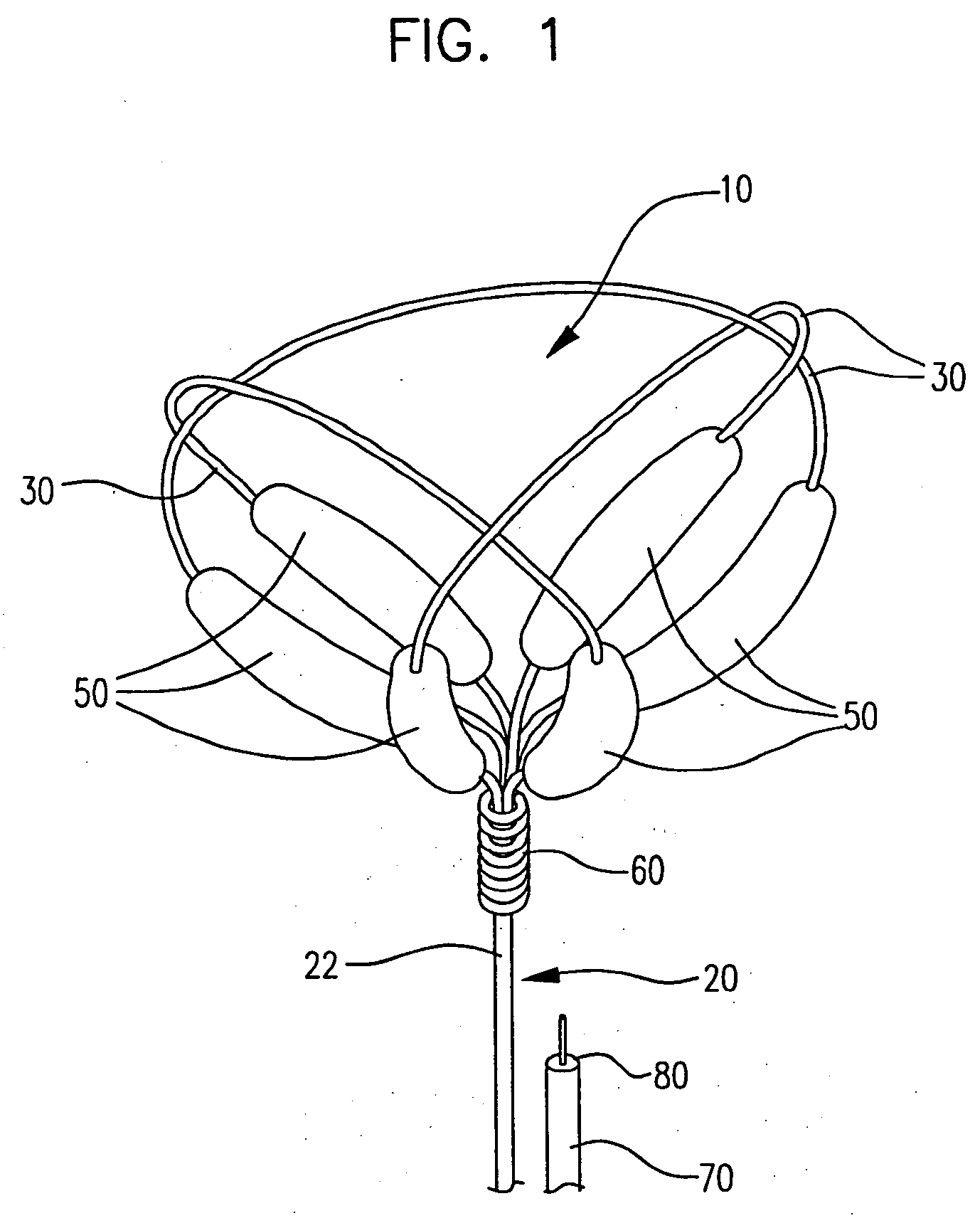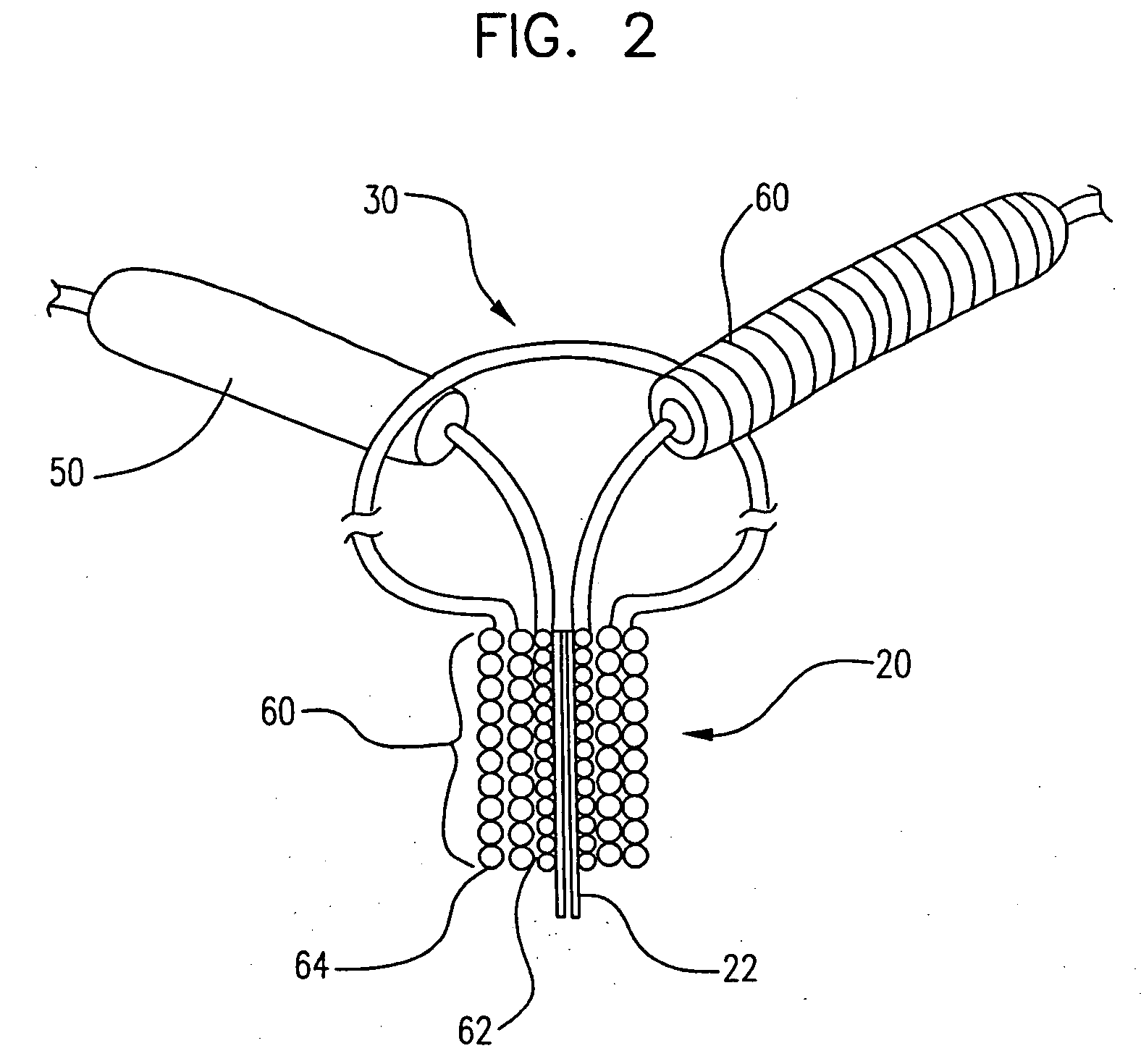Expansible neck bridge
a neck bridge and expansion technology, applied in the field of medical devices, can solve the problems of causing emboli in undesired areas, potentiating the death of patients, and significant risks in the use of cyanocrylates and similar materials,
- Summary
- Abstract
- Description
- Claims
- Application Information
AI Technical Summary
Benefits of technology
Problems solved by technology
Method used
Image
Examples
Embodiment Construction
[0031] This invention involves a device and procedure for solving the problem of material flow into and out of aneurysms. A retainer assembly is placed at the mouth of the aneurysm sac, forming a barrier for blood flow into the sac or migration of other devices, such as vaso-occlusive implants, out of the sac. Vaso-occlusive implants may be placed inside the sac for filling the unwanted space. The retainer assembly includes a swellable material placed on the spanning support framework to further close off the the aneurysm sac. The swellable material absorbs fluid upon contact with blood and expands in volume. The retainer assembly with the expanded swellable material seals off the neck of the aneurysm, preventing vaso-occlusive devices from migrating into the parent vessel. The following detailed description should be read with reference to the drawings in which like elements in different figures are numbered identically.
[0032]FIG. 1 illustrates a retainer assembly 10 with a base 2...
PUM
 Login to View More
Login to View More Abstract
Description
Claims
Application Information
 Login to View More
Login to View More - R&D
- Intellectual Property
- Life Sciences
- Materials
- Tech Scout
- Unparalleled Data Quality
- Higher Quality Content
- 60% Fewer Hallucinations
Browse by: Latest US Patents, China's latest patents, Technical Efficacy Thesaurus, Application Domain, Technology Topic, Popular Technical Reports.
© 2025 PatSnap. All rights reserved.Legal|Privacy policy|Modern Slavery Act Transparency Statement|Sitemap|About US| Contact US: help@patsnap.com



